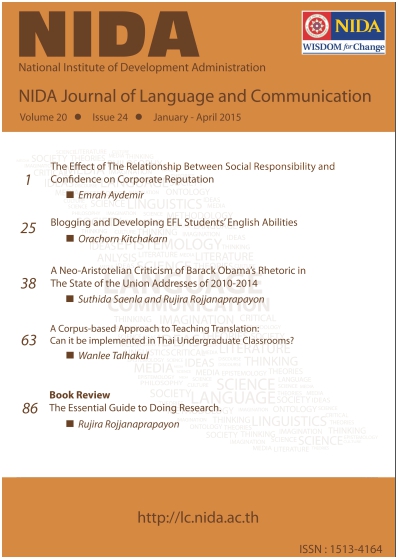A Corpus-based Approach to Teaching Translation: Can it be implemented in Thai Undergraduate Classrooms?
Keywords:
a corpus-based approach, teaching translation, Thai learners, undergraduate classroomsAbstract
The corpus-based approach to translation pedagogy and research has been increasingly employed in a number of countries; however, its significance in regards to the teaching of translation, especially in the Thai undergraduate context, has neither been fully explored nor tested as evidenced by the fact that this type of computer-aided teaching is rarely found in translation programs at universities in Thailand. The aims of this article are to discuss the effectiveness of the corpus-based approach as well as the other advantages it provides for teaching translation in the hopes that it will encourage teachers to implement the method in translation classrooms. The article starts with a review of the literature on the application of the corpus-based method in the field of translation. Then an explanation of the characteristics of a traditional translation classroom is provided. This leads to the next part in which the benefits of using the corpus-based approach in teaching translation are reviewed. Finally, an argument for the use of this approach with Thai undergraduate students in translation classrooms is put forth.Downloads
How to Cite
Issue
Section
License
By submitting a manuscript, the author transfers the copyright for the article to School of Language and Communication, National Institute of Development Administration (NIDA), if and when the manuscript is accepted for publication. Though the journal is an open-access, reproduction of any material published in NIDA Journal of Language and Communication for non-personal and/or commercial purpose requires a written permission from School of Language and Communication, National Institute of Development Administration (NIDA).






